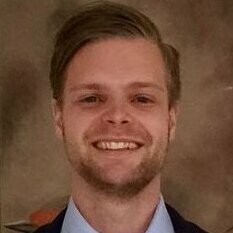Unraveling the physics of the hygro-expansion of paper
Niels Vonk defended his PhD thesis cum laude at the department of Mechanical Engineering on March 24th.
![[Translate to English:] [Translate to English:]](https://assets.w3.tue.nl/w/fileadmin/_processed_/1/2/csm_Vonk%20Banner%20image_5ceed24b7d.jpg)
There are various factors that affect the quality of prints of digital inkjet printers, among them being the drying process of paper sheets after printing with water-based inks. If the drying process is not properly controlled, paper deformations such as cockling, fluting, waviness, and curling can occur, which greatly reduce print quality. For his PhD research, Niels Vonk investigated the expansion of paper fibers, inter-fiber bonds, and sheets in the presence of moisture (so-called hygro-expansion) to gain greater insight into the cause of paper sheet deformation.
For centuries, paper printing has been an essential tool to produce graphics and readable materials in a fast, cheap, and reproducible manner. For instance, the worldwide annual consumption of paper for printing and writing in 2022 was estimated to be 85 million tons.
Nowadays, two printing approaches are used – offset printing and digital inkjet printing. Offset printing is the oldest, and typically used to print large volumes of newspapers and books using printing plates. Digital inkjet printing is part of the fabric of modern life, given that many people use a digital inkjet printer in their work or at home. Since inkjet printing uses water-based inks, it should become the printing norm to progress towards a more sustainable future of printing.
“A key challenge for high-quality water-based printing is the precise control of the paper drying to minimize deformations such as cockling, fluting, waviness, and curl,” says PhD researcher Niels Vonk. “These deformations can be traced back to the complex fibrous microstructure of paper, in other words all the way down to the fibers that make up the paper itself.”
Hygro-expansion
For his research, Vonk explored the so-called hygro-expansion of paper at different length scales in search of a better understanding as to why paper sheets deform in the presence of water moisture.
“Along with my colleagues, we developed a novel quasi-3D single fiber hygro-expansion method to study how the dimensions of single fibers changed in the longitudinal and transverse direction.”
Fiber topographies were captured and processed using an optimized Global Digital Height Correlation algorithm to visualize changes in the hygro-expansion of a single fiber over time and relative humidity. The approach was validated by studying two types of viscose (semi-synthetic fiber), a 3D-printed hydrogel, and paper fibers.

Importance of stress
“It is generally known that paper sheets dried under stress have weaker hygro-expansion capabilities than paper dried in a free manner”, says Vonk. “However, the driving mechanisms behind this phenomenon are debated.”
Therefore, to see if the fibers forming the sheet also exhibit this difference, Vonk examined the hygro-expansion of fibers picked from freely and restrained dried sheets. Interestingly, the restrained dried fibers show a significantly lower hygro-expansivity than freely dried fibers. To unravel the driving mechanisms, Vonk undertook an in-depth study which revealed that the fibers were structurally different after the drying procedure.
“Restrained dried hardwood fibers can ‘transform’ into fibers exhibiting similar characteristics as freely dried fibers after being subjected to high moisture content levels for a longer period of time” says Vonk.
Inter-fiber bonds
After studying single fiber hygro-expansion, Vonk extended the same method to enable full-field hygro-mechanical characterization of inter-fiber bonds, enabling unique observations of the competition between the low longitudinal and high transverse hygro-expansivity of the two fibers in the bonded area. “Excitingly, a simple analytical bending model captured the complex inter-fiber bond mechanics and revealed the low significance of transverse fiber hygro-expansion strain in the bonded area.”
Finally, Vonk designed a setup for in-situ hygro-mechanical testing in an environmental scanning electron microscopy to characterize the hygro-expansion of cross-sections of inter-fiber bonds at high resolution.
Due to the accuracy of the method, it was revealed that fibers are always progressively damaged under electron beam irradiation, even for optimized (low) electron currents. Nevertheless, the hygro-expansion gradient in the inter-fiber bond cross-sections could be qualitatively characterized, revealing novel insight on the transverse fiber strain transferal in the bonded regions.
Title of PhD thesis: Unraveling the physics of the hygro-expansion of paper: A multi-scale experimental study. Supervisors: Johan Hoefnagels, Marc Geers, and Ron Peerlings.
Media contact
Latest news


![[Translate to English:] [Translate to English:]](https://assets.w3.tue.nl/w/fileadmin/_processed_/e/0/csm_BvOF%202019_1031_BHF%20license%20TUe%20ILI%20copy_8a50884392.jpg)